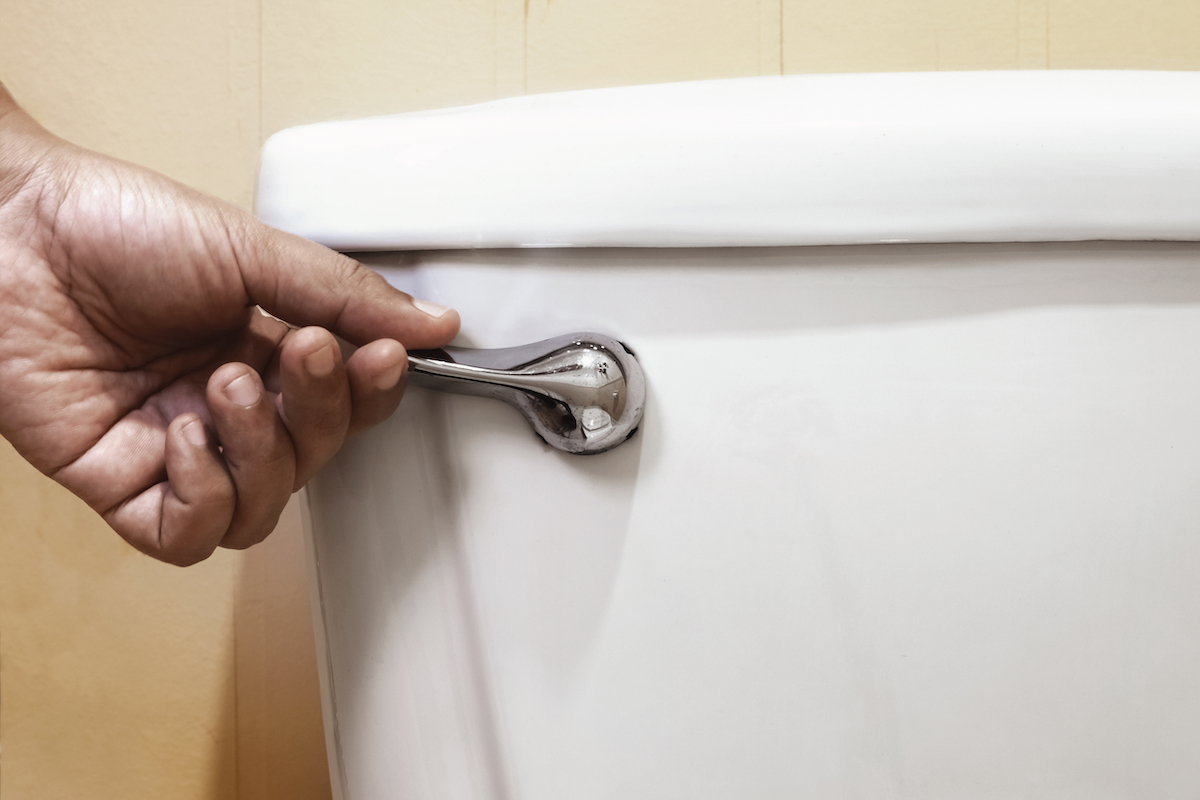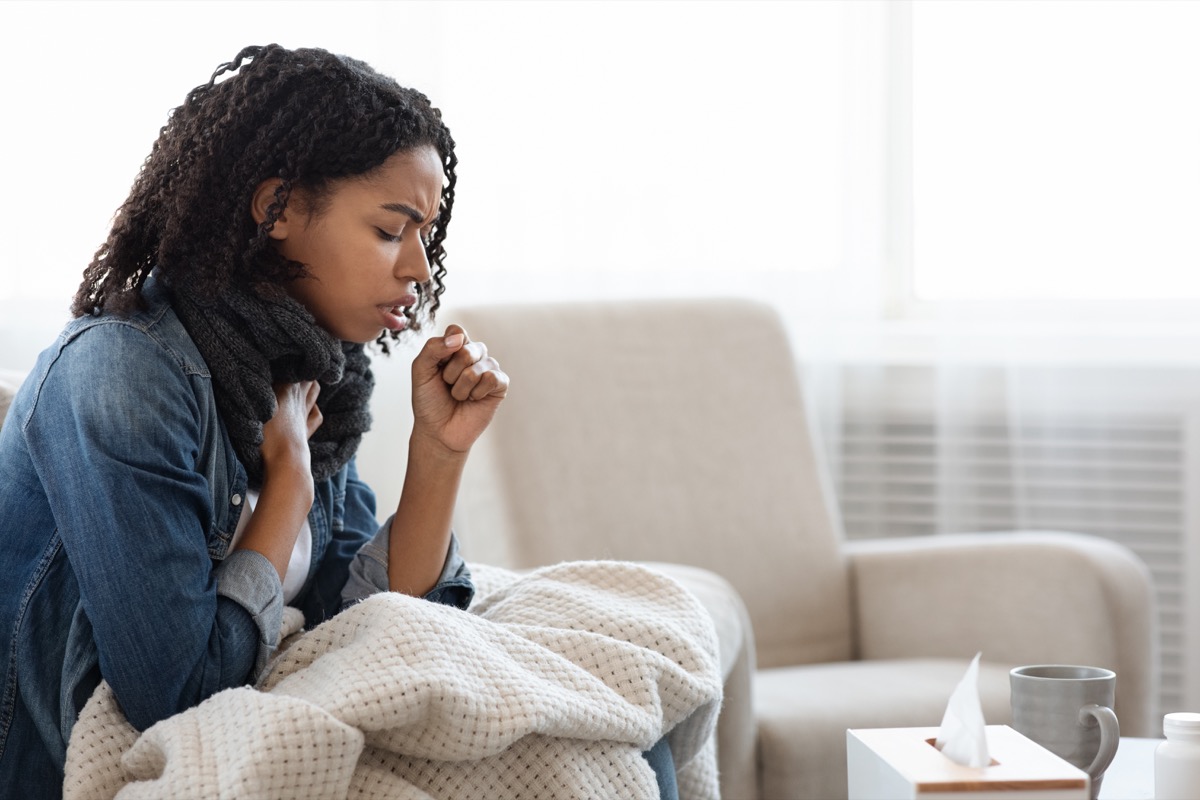A new study out of Florida Atlantic University’s (FAU) College of Engineering and Computer Science found that you shouldn’t linger after flushing a toilet or urinal because aerosolized droplets do. Flushing a toilet can generate large quantities of microbe-containing aerosols, according to the study, which was published in Physics of Fluids on April 20. The study authors determined that aerosol levels that spray from flushing in public restrooms make them “hotbeds for airborne disease transmission, especially if they do not have adequate ventilation or if toilets do not have a lid or cover”—which most public toilets, and all urinals, do not. Study co-author Siddhartha Verma, PhD, an assistant professor in FAU’s Department of Ocean and Mechanical Engineering, said in a statement that the total number of droplets generated from flushing a toilet reached up into the tens-of-thousands range. And for more on the area of your home you shouldn’t disinfect, check out The CDC Says You Should Never Disinfect This One Thing. You might think that closing the lid on the toilet can help avoid the spread of germs, but because aerosolized droplets are so small, the FAU researchers found it doesn’t make much of a difference. The toilet and urinal both generated significant quantities of tiny droplets, which were detected at heights of up to five feet for 20 seconds or longer after the flush was initiated. Smaller droplets can remain suspended in the air for a longer time, which means these particles pose a significant risk if they contain infectious microorganisms, said Verma. Although there were a smaller number of droplets in the air when the toilet was flushed with the lid closed, the reduction was not that significant because the small aerosolized droplets can easily escape through the tiny gaps between the lid and the seat. For more useful information about COVID delivered straight to your inbox, sign up for our daily newsletter. When you think about how many people use public restrooms and how infrequently some of them are cleaned, it’s no surprise they pose a risk of contracting illnesses. According to the study, “when dispersed widely through aerosolization… pathogens can cause Ebola, norovirus that results in violent food poisoning, as well as COVID-19 caused by SARS-CoV-2.” An earlier study published in 2013 in the American Journal of Infection Control also noted the risk of infectious disease transmission from flushing a toilet. Those researchers from the University of Oklahoma College of Public Health pointed out that many pathogens, including “Shigella, E coli, C difficile, severe acute respiratory syndrome (SARS) coronavirus, and norovirus, can survive on surfaces for weeks or even months.“ae0fcc31ae342fd3a1346ebb1f342fcb And for more on how COVID spreads, even if you’ve gotten your shots, Dr. Fauci Says This Is How You Can Catch COVID Even If You’re Vaccinated. These aerosolized droplets are especially of concern while COVID is circulating. Although transmission via respiratory droplets is the most common form of COVID transmission, “alternative routes may exist given the discovery of small numbers of viable viruses in urine and stool samples,” said the FAU researchers. “Public restrooms are especially cause for concern for transmitting COVID-19 because they are relatively confined, experience heavy foot traffic, and may not have adequate ventilation.” That last element is what really makes public restrooms risky. “The significant accumulation of flush-generated aerosolized droplets over time suggests that the ventilation system was not effective in removing them from the enclosed space even though there was no perceptible lack of airflow within the restroom,” study co-author Masoud Jahandar Lashaki, PhD, an assistant professor in FAU’s Department of Civil, Environmental and Geomatics Engineering, said in a statement. The study’s findings suggest that incorporating better ventilation in public spaces could help prevent aerosol accumulation. But in the meanwhile, if you’re using a public bathroom during COVID, be sure to wear your mask. To see what people who get COVID post-vaccination have in common, check out 65 Percent of Vaccinated People Who Get COVID Have This in Common, CDC Says.



